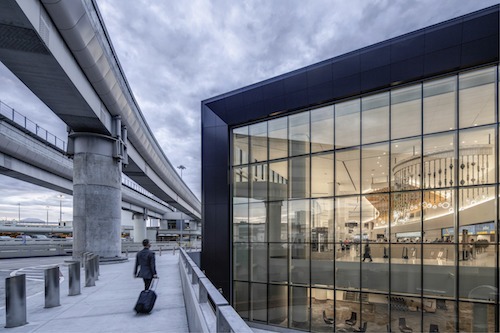
by Sara Marberry
“What can hospitals learn from airports in designing better patient experiences?”
Last week, I got back from a personal trip to Arizona. The planes were crowded and we had to wear masks, but my passenger experience at both O’Hare and Sky Harbor airports was pretty good.
Like going to the hospital or visiting a doctor after the pandemic hit, airline travel is the same but different.
Upon returning to work, I saw an email from Gensler about the future of airport design, with links to several articles about creating better passenger experiences on its website. Because I’m a bit of a design nerd, I read them.
Patient experience vs. passenger experience
Because in many ways, the hospital patient experience is a lot like the airport passenger experience.
You get there, park your car (or get dropped off), check-in, navigate to a destination, and wait. You might buy food or beverages while you’re waiting. Basically only difference is that unlike airports, in most hospitals you don’t have to pass through security.
And I don’t know about you, but I generally experience a little anxiety going to the airport because there are so many factors that could make me miss my plane. Going to the hospital can also be stressful, especially if you (or a loved one) are dealing with illness or feel uncertain about a procedure or diagnosis.
Best-in-class
“The desire for best-in-class passenger experience is at the core of growing trends we are seeing in airport design — including touchless technology, digital wayfinding, and a focus on the airport as a reflection of its location,” write Gensler’s Ryan Fetters and Scott Dunlap.
Almost everything they share that enhances the passenger experience in San Francisco international Airport’s new Harvey Milk Terminal 1 (pictured above) could also be used for a best-in-class patient experience, including:
- Self-service kiosks with touchless features
- Touchless water-filling stations
- Strategically placed digital dashboards
- All-gender restrooms
- Concessions featuring locally loved quick-service restaurants
- Large-scale installations and smaller works by local artists
Seamless journey
A different article on Gensler’s website looked at re-navigating the passenger journey for a more “seamless curb-to-gate” journey. Like Fetters and Dunlap, authors Derrick Choi and Ryan Kellogg also explore touch-free automation, as well as utilizing the Internet’s omnichannel reach to reinvent the concession experience.
Omnichannel reach is the ability to connect with passengers on their personal devices. But now, instead of just using it to let people know about flight or gate changes and getting a boarding pass, Cho and Kellogg say it can be used for things like ordering concessions, pre-selecting parking, and other stuff to “monetize the customer experience from myriad touchpoints.” The one-to-one omnichannel approach could be used to connect with patients and families beyond just letting them know when their loved one is out of surgery.
Think about how that could improve the waiting experience in hospitals.
The new premium experience
Another strategy Choi and Kellogg feel is important is to understand the new premium experience for travelers. As a result, many airlines and airports are reimagining their airport lounges into a “decidedly new experience focused on safety, health, and wellness.”
Can the airport lounge experience be adapted for hospitals?
I don’t know. But it may be worth exploring. Or how about using it as a model for staff lounges?
I wrote about what the healthcare industry can learn from the aviation industry to improve the patient experience a year before Covid-19 hit. Some of the concepts are similar, but it’s a different world we live in now.
Time to start thinking about some new ideas.
